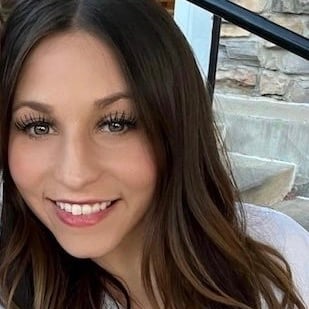Before making the decision to refinance a reverse mortgage, have a feel for your home’s equity, the current interest rates and your general financial footing. It may not end up being the right decision for you — first determine the risks and costs.
How to refinance a reverse mortgage loan
The process varies from lender to lender, but the general flow looks like:
- Complete a reverse mortgage application. Most applications can be completed online, but help is available from your lender in person or over the phone.
- Meet with an FHA-approved reverse mortgage counselor. Similar to when you applied for your first reverse mortgage, you may need to meet with a mortgage counselor.
- Find a reverse mortgage lender. This could be the same lender who helped you with your first reverse mortgage or a different lender. Fill out the application, gather assets and find the best rate.
- Complete an appraisal on your home. A fresh appraisal gives you and your lender an update on the value of your home.
- Sign your term sheet. With the appraisal and paperwork complete, you can close the loan and wait for the funds disbursement.
When can I refinance my reverse mortgage loan?
You must meet these requirements before you can refinance your reverse mortgage loan, according to the National Reverse Mortgage Lenders Association:
- 18 months since reverse mortgage closing. As a borrower, you’re only eligible for refinancing your reverse mortgage loan after 18 months from your prior refinance or initial reverse mortgage loan.
- Pass the closing cost test. To pass the test, the principal amount on your mortgage must be equal to or five times the loan closing costs. So if closing costs cost $1,500, your refinanced mortgage must be $7,500 more than your last mortgage.
- Pass the loan proceeds test. To pass this test, your loan proceeds must be equal to or more than 5% of the amount being refinanced.
Commonly referred to as the five-five rule, you need to meet both standards to qualify for refinancing your reverse mortgage loan.
The benefits of refinancing a reverse mortgage loan
The benefits of refinancing your reverse mortgage include:
- Potentially lower interest rate. Similar to traditional refinancing, you’ll have to weigh the costs of paying for a new loan with the potential savings on interest.
- Tap into equity. If your home’s value has increased, refinancing gives you the ability to pull out money from your home’s equity if needed.
- Add your spouse to the loan. With your spouse added to the loan, you’ll both have a layer of financial protection. In the event that either of you die, the surviving spouse can continue to live on the property.
- Allow an heir to keep the home. If the originator of the reverse mortgage dies, the heirs have to repay the reverse mortgage to keep the property. Depending on your financial situation, you might choose to refinance out of a reverse mortgage to ensure heirs can inherit the property.
- Access low-cost credit. If you do a cash-out refinance on your reverse mortgage, it could help finance a home improvements that would increase your property value.
What to watch out for
Refinancing your reverse mortgage is similar to the original application process, but there are some things you’ll need to watch out for in the process:
- Unexpected costs and expenses. Refinancing your reverse mortgage will come at a cost. You’ll need to pay closing costs, premium, origination and servicing fees. Work with your lender to get a detailed rundown of these costs before closing.
- Decrease in property value. If your home’s value has dropped, it’s unlikely refinancing will benefit you financially.
- Jump in interest rates. You might want to reconsider your timing if interest rates have risen. In this case, you could end up paying more per month after refinancing.
Eligibility for a reverse mortgage refinance
Not all borrowers are eligible to refinance their reverse mortgage. You’ll be in better shape for refinancing if you meet the following criteria:
- Mortgage holder must be 62 years or older.
- History of on time payments with taxes, insurance and premiums.
- Can’t be delinquent on any federal debt.
- Must be using the home as a primary residence.
- Must prove your ability to pay all costs associated with the home — including taxes, insurance and HOA fees.
- Own your home outright or have a low mortgage balance that’s paid off in the reverse mortgage refinancing
- The home must meet FHA requirements.
If you choose to refinance your reverse mortgage through a private company, your eligibility requirements may vary.
Required documents
Have these documents on hand before starting the refinancing process:
- Government-issued ID, such as a driver’s license
- Proof that the property you’re refinancing is your permanent address
- Proof of income
- Proof of reverse mortgage loan counseling, which is not always required depending on your eligibility
Alternatives to refinancing your reverse mortgage
If you don’t meet the eligibility for a reverse mortgage, you have other options.
- Home-Equity Loan. Borrow against the equity in your home if you need cash. Your interest is tax deductible, and fees can be lower than a reverse mortgage, but you could lose your home if you miss monthly payments.
- Home Equity Line of Credit. If you’re looking for a line of credit that acts as a safety net for cash when you need it, a HELOC is a good option. You draw when you need it, and pay interest only on what you use. But after the draw period is up, interest is variable, so payments can be unpredictable.
Time to refinance?
Compare refinancing options to potentially reduce your rate or lower your monthly payments.
Bottom line
Refinancing can get you lower rates on your mortgage if you have equity in your home. There is a list of qualifications to meet, including being 62 years old or older and have a history of on-time payments and taxes.
Frequently asked questions
How can you refinance out of a reverse mortgage?
When you start the refinancing process, you can apply for and revert back to a traditional mortgage. This could occur for borrowers who are concerned their heirs can’t repay the reverse mortgage, don’t want the property as a primary residence any longer or no longer need the income from a reverse mortgage
How do I change the payment terms of my reverse mortgage when refinancing?
It depends on your lender, but you should be able to change payment terms. For example, instead of getting a monthly payment, you could get a line of credit or monthly payments for only a fixed period of time.
Ask a question
More guides on Finder
-
50-Year Mortgages: Probably Not a Great Idea
Extending a loan that large can mean paying over double the interest, so it’s probably not in your best interest.
-
How to Get Help With Your Mortgage: For Homeowners & Buyers (2025)
Step-by-step guide to mortgage relief, refinance programs and down payment help for homeowners and buyers.
-
How Much Would I Pay on an $850,000 Mortgage?
Breakdown of what you might pay monthly over the life of an $850,000 mortgage.
-
How to cash-out refinance a rental property
You’ll need a minimum credit score of 680, cash reserves and at least 25% equity to qualify.
-
Mortgage refinancing options when unemployed
Refinancing your mortgage while unemployed is challenging, but it may be possible if you have an alternative means to repay the loan.
-
Veterans United Mortgage Review
Veterans United offers mortgage options that cater to the military community and their families.
-
How much would I pay on a $250,000 mortgage?
Breakdown of what you might pay monthly over the life of a $250,000 mortgage.
-
How much would I pay on a $100,000 mortgage?
Breakdown of what you might pay monthly over the life of a $100,000 mortgage.
-
Rocket Mortgage Review: Fast Process, 100% Online
Apply online in minutes to compare home loans you qualify for.

